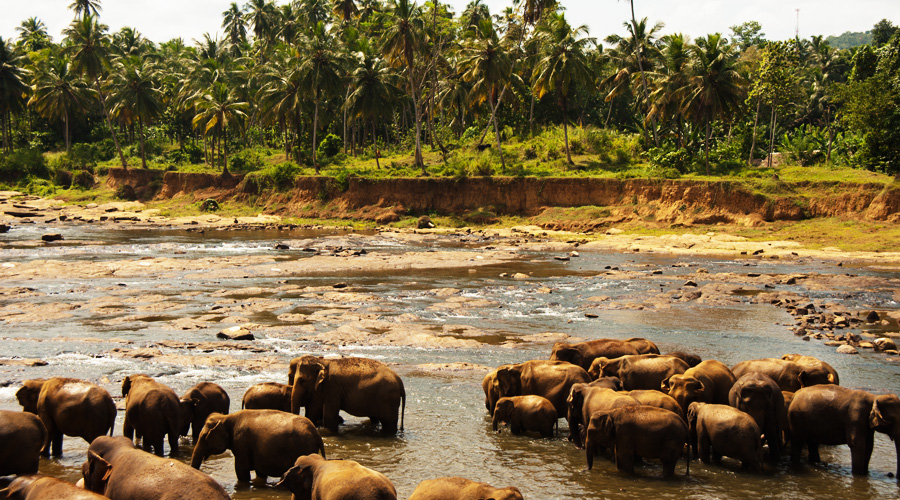If you love elephants, Uda Walawe should be high on your holiday hit list. Sightings of these peaceful pachyderms are nearly always guaranteed as the lush grasslands and expansive reservoir of this southerly national park form an ideal habitat for these gentle giants. Visually the park is beautifully photogenic as the misty hills of the southern tea country rise up strikingly against the verdant green of the abandoned teak plantations, scrub jungle and riverine forests that comprise the varying ecosystems of the park. Uda Walawe covers 303 square kilometres and lies between the island’s wet and dry zones.
Aside from elephants, which are often spied in tightly-knit generational groups, the park is also home to sloth bears, wild boar, monkeys, mongoose, black-naped hare and buffaloes. Leopards also inhabit the park but because of the long grasslands, are hard to spot. Uda Walawe is also home to many species of birds including endemics such as the Ceylon woodshrike, Ceylon spurfowl and the Ceylon swallow. The open parkland also attracts many birds of prey and the reservoir is adored by water birds. Safaris into Uda Walawe are conducted in open top jeeps, allowing for excellent wildlife viewing. Since the early and late hours of the day are cooler, these are optimal times for wildlife watching.
Attached to Uda Walawe is the Elephant Transit Home, which aims to rehabilitate orphaned elephant calves until they are strong enough for their release back into their natural habitat of the park. These pachyderms are semi-wild – they live freely in a separate corner of the park – and only visit the transit home at certain times of the day when they are fed huge quantities of milk. Once they reach maturity (around five years old), they are released into the park. Contact with humans is kept to an absolute minimum and the only time you’ll catch a sight of them is at one of four daily feeding times (9am, noon, 3pm and 6pm).

